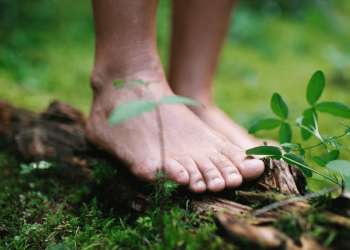Walking is one of the most natural human activities, yet most of us rarely pay attention to it. We walk while thinking about our to-do lists, replaying conversations, or scrolling through our phones. But what if each step could become an opportunity for peace, clarity, and profound presence? Walking meditation transforms an everyday activity into a powerful mindfulness practice that grounds us in the present moment and reconnects us with our bodies and surroundings.
Why Walking Cultivates Mindfulness
Unlike sitting meditation, which can feel intimidating or physically uncomfortable for many people, walking meditation offers a gentle, accessible entry point into mindfulness practice. The rhythmic nature of walking naturally anchors attention, while the physical movement helps release restless energy that might otherwise distract a busy mind.
Walking engages multiple senses simultaneously. You feel your feet touching the ground, notice the rhythm of your breath, observe the environment around you, and sense your body moving through space. This multi-sensory experience creates numerous anchors for awareness, making it easier to catch yourself when your mind wanders and gently return to the present moment.
The practice also bridges the gap between formal meditation and daily life. While sitting meditation happens in a dedicated space and time, walking is something we do throughout the day. By learning to walk mindfully, you develop the ability to bring that same quality of awareness to ordinary activities, gradually infusing your entire day with mindfulness.
Research supports the mental health benefits of mindful walking. Studies have shown it reduces anxiety and depression, improves mood and well-being, enhances cognitive function, and helps regulate the nervous system. The combination of gentle physical activity with present-moment awareness creates a powerful antidote to the stress and disconnection many of us experience in modern life.
Core Techniques for Mindful Walking
The Foundation: Sensing Your Body
Begin by standing still and taking a few moments to arrive fully in your body. Feel the weight of your body distributed through your feet, notice any tension in your shoulders or jaw, and observe your breath moving naturally. This pause creates a transition from wherever your mind has been to where you are right now.
As you start walking, pay attention to the physical sensations of each step. Notice the heel touching the ground, the weight rolling through the foot, the toes pushing off. Feel the alternating rhythm of your legs, the swing of your arms, the subtle movements in your core that maintain balance. You don’t need to change anything; simply observe the miracle of your body in motion.
Working with Pace
The speed of your walking significantly affects the quality of your awareness. Many people find that walking slower than usual makes it easier to notice sensations and stay present. You might walk at half or even a quarter of your normal pace, especially when first learning the practice.
However, mindful walking doesn’t require moving in slow motion. You can practice at a natural, comfortable pace or even while walking briskly. The key is matching your pace to your ability to maintain awareness. If you notice your mind constantly wandering, slow down. If you feel agitated or impatient at a slower pace, allow yourself to walk faster while still paying attention to the sensations of movement.
Breath Awareness
Your breath is a portable anchor for mindfulness, always available wherever you go. Notice the natural rhythm of your breathing as you walk. You might synchronize your steps with your breath, perhaps taking three or four steps with each inhale and the same number with each exhale. Or simply observe how your breath and stride naturally coordinate without forcing any particular pattern.
When you notice your mind has wandered into thought, gently return your attention to the sensation of breathing. Feel the cool air entering your nostrils, the expansion of your chest and belly, the release of each exhale. This simple return to breath awareness, practiced hundreds of times during a walk, trains your mind in the essential skill of presence.
Expanding Awareness
After establishing a foundation of body and breath awareness, gradually expand your attention to include your surroundings. Notice the quality of light, the colors and shapes around you, the sounds near and far. Feel the temperature of the air on your skin, the breeze in your hair. Observe clouds moving across the sky or leaves rustling on trees.
The practice is not to label or analyze what you perceive, but simply to experience it directly. When you notice yourself thinking “That’s a beautiful oak tree,” gently return to the direct sensory experience of seeing green and brown, shapes and shadows, movement and stillness. This distinction between direct experience and conceptual thinking is at the heart of mindfulness practice.
Mental Noting
Some practitioners find it helpful to use mental noting, silently labeling their experience with simple words. You might note “lifting, moving, placing” with each step, or “seeing, hearing, feeling” as different sensations arise. The notes should be light and brief, like subtitles rather than running commentary. This technique can help steady attention when the mind is particularly restless, providing a gentle structure without becoming rigid or mechanical.
Daily Practice Tips
Start Small and Build Gradually
If you’re new to mindful walking, begin with just five or ten minutes. Choose a time and place where you can walk without worrying about reaching a destination or meeting a schedule. A quiet park, a garden, or even a hallway in your home can work well. As the practice becomes more familiar, gradually extend the duration.
Many people find it helpful to establish a regular walking meditation practice, perhaps starting or ending each day with a mindful walk. Consistency matters more than duration. Ten minutes of daily practice will yield more benefits than an occasional hour-long session.
Create a Dedicated Route
Designate a specific path for mindful walking, somewhere you can walk repeatedly without needing to navigate or make decisions about where to go. This might be a loop in your neighborhood, a section of trail, or even just pacing back and forth in your backyard. The familiarity of the route removes the need to pay attention to directions, freeing your awareness to focus on the present-moment experience.
Walking the same path repeatedly also allows you to notice subtle changes in your environment and in yourself. You might observe how the same place looks different in various weather conditions or times of day, how your own mental state colors your perception, and how sensations and thoughts arise and pass away moment by moment.
Integrate Into Daily Life
Beyond dedicated practice sessions, look for opportunities to bring mindful awareness to walks you’re already taking. The journey from your car to your office, from the bus stop to home, or just moving from room to room can become moments of practice. You don’t need to walk slowly or look unusual; simply bring attention to the experience of walking rather than being lost in thought.
When you’re feeling stressed or overwhelmed, a brief mindful walk can serve as a reset button. Even three minutes of attentive walking can shift your nervous system from fight-or-flight to rest-and-digest, helping you return to your activities with greater clarity and calm.
Work with Different Environments
While quiet, natural settings make it easier to practice mindfulness, challenge yourself to also walk mindfully in busier environments. Walking mindfully down a city street, through a shopping center, or in your workplace corridors teaches you to maintain presence amidst distractions. This skill becomes invaluable as you work to bring mindfulness into all areas of your life.
In busier settings, you might focus more on internal sensations (breath, body, movement) rather than trying to take in all external stimuli. Or you might practice open awareness, allowing sounds, sights, and sensations to arise and pass without getting caught up in reactivity or preferences.
Use Technology Mindfully
While the goal is to reduce distraction, some people find it helpful to use a meditation timer or app with gentle interval bells to remind them to check in with their awareness. A bell every few minutes can prompt you to notice if your mind has wandered and to return to present-moment experience. However, avoid using music or podcasts during mindful walking, as these pull attention away from direct experience.
Common Challenges and Solutions
Mind Wandering: The most common challenge is discovering that your mind has wandered into thought. This isn’t a failure; it’s the practice. Each time you notice thinking and return to present-moment awareness, you’re strengthening your mindfulness muscles. Be patient and kind with yourself.
Impatience or Boredom: If you feel frustrated or bored, notice these feelings with curiosity rather than judgment. Boredom often arises when we expect experience to be more entertaining than it is. Can you become interested in boredom itself? What does it feel like in your body? This shift from resisting to investigating transforms obstacles into opportunities for insight.
Physical Discomfort: Adjust your pace, posture, or route if you experience pain or significant discomfort. Mindfulness doesn’t require suffering. However, minor discomfort or restlessness often passes if you simply acknowledge it and continue walking. Learning to be with mild discomfort without immediately reacting is a valuable aspect of the practice.
Self-Consciousness: Many people worry about looking strange while walking slowly or appearing lost in thought. Remember that you can practice at any pace, and most people are too absorbed in their own concerns to notice you. If self-consciousness arises, make it part of your practice by noticing the physical sensations and thoughts that accompany feeling watched or judged.
Deepening Your Practice
As mindful walking becomes more familiar, you might explore variations that deepen your practice. Walking in complete silence for extended periods, practicing at different times of day, or combining walking meditation with nature observation can all enrich your experience.
Consider joining a local meditation group that offers walking meditation, or attending a retreat where you can practice for longer periods. The support of a community and experienced teachers can help you navigate challenges and discover new dimensions of the practice.
Remember that mindful walking is not about reaching a particular state or achieving a goal. It’s about being fully present for the life you’re living right now, one step at a time. Each walk is complete in itself, not a means to some future end. This moment, this step, this breath is enough.
Conclusion
Walking meditation offers a bridge between the stillness of formal meditation and the motion of daily life. It teaches us that mindfulness isn’t about withdrawing from the world but about showing up fully for each moment, no matter how ordinary it may seem. Through the simple practice of paying attention to walking, we learn to inhabit our bodies, connect with our environment, and return again and again to the only time we ever truly have: this present moment.
Begin today. Walk out your door with intention and attention. Feel your feet touching the earth. Notice the miracle of your body carrying you forward. Let each step be a reminder that you are here, now, alive. This is the practice, and it is always available to you.
- what is tai chi walking for mindfulness
- developing mindful walking practice
- modern mindfulness exercises
- mindfulness meditation techniques
- mindful moving meditation
- mindfulness meditation benefits
- mindful movement for awareness
- body awareness mindfulness
- intentional mindfulness walking
- mindful slow walking practice






